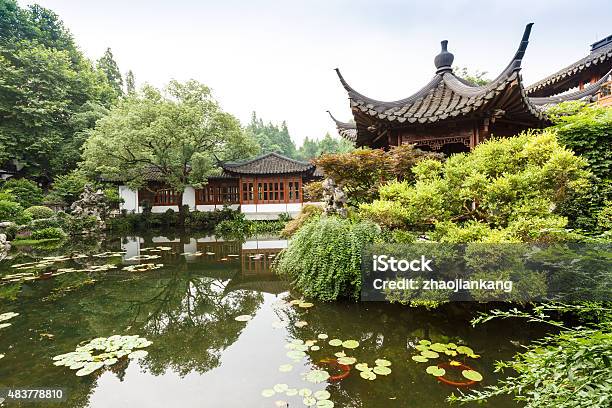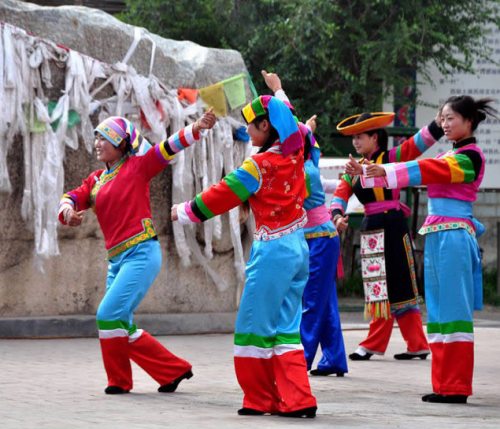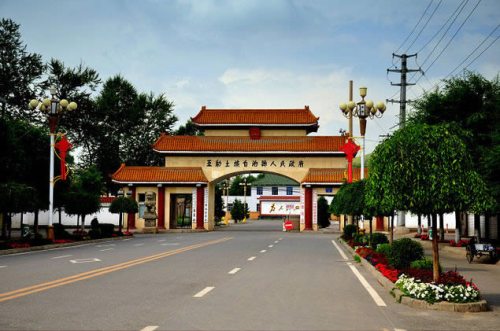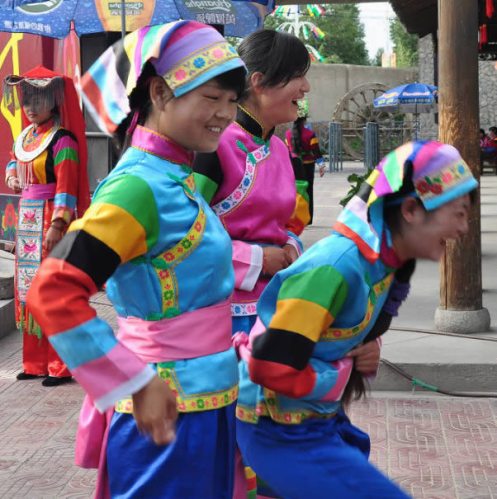Unveil the Secrets of Huzhu Tu Ethnic Garden: A Journey through Tradition and Beauty

An Essential Guide to Visiting Huzhu_Tu_Ethnic_Garden
Nestled in the heart of Qinghai Province, just a short drive from the bustling city of Xining, lies the enchanting Huzhu Tu Ethnic Garden. This unique cultural park serves as a vibrant homage to the Tu people, one of China’s oldest ethnic groups, who have inhabited this region for centuries. Visitors to the garden are treated to a mesmerizing blend of stunning landscapes, traditional architecture, and a rich tapestry of local customs and traditions that breathe life into the Tu culture.
As you wander through the expansive grounds, spanning over 130,000 square meters, you’ll be captivated by the intricate designs of the traditional Tu buildings, constructed using ancient techniques that showcase a harmonious relationship with nature. The garden is not just a feast for the eyes; it’s also a hub of cultural experiences. Engage with locals through interactive performances that celebrate the Tu people’s music, dance, and folklore, including the lively “Anzhao Dance” and the thrilling “Wheel Fall” display.
With its breathtaking scenery and immersive cultural experiences, Huzhu Tu Ethnic Garden promises to be an unforgettable destination for international travelers seeking to explore the richness of ethnic diversity in China. Whether you’re looking to sample traditional delicacies like barley wine or participate in vibrant local festivals, this garden offers a delightful escape into the heart of Tu heritage. Embrace the warmth of the Tu people, and let their stories and traditions inspire your journey.
In This Guide
- An Essential Guide to Visiting Huzhu_Tu_Ethnic_Garden
- The Rich History and Legends of Huzhu_Tu_Ethnic_Garden
- Main Highlights: What You Absolutely Can’t Miss
- Planning Your Visit: A Practical Guide
- Tickets: Prices, Booking, and Tips
- How to Get There: A Complete Transportation Guide
- Local Cuisine and Accommodation Nearby
- Frequently Asked Questions
- Final Thoughts on Your Trip
The Rich History and Legends of Huzhu_Tu_Ethnic_Garden
Nestled in the enchanting landscapes of Qinghai Province, the Huzhu Tu Ethnic Garden offers visitors a captivating glimpse into the rich history and vibrant culture of the Tu people. Known as the only autonomous county in China primarily inhabited by the Tu ethnic group, Huzhu is often referred to as the “Hometown of the Tu.” The region is steeped in history, with roots tracing back to the Tuyuhun Kingdom during the Tang Dynasty, marking it as a vital cultural and political hub in ancient China.
The Tu people, believed to be descendants of the ancient Tuyuhun, have maintained their unique heritage through centuries of cultural evolution. Their customs, language, and artistic expressions reflect a harmonious blend of influences from neighboring Tibetan and Mongolian cultures, creating a distinctive tapestry that is both rich and compelling. This fusion is evident in the local architecture, traditional costumes, and various forms of artistic performances that visitors can experience within the garden.
A highlight of Huzhu’s cultural legacy is the annual celebration of traditional festivals, such as the “Er Yue Er Laitai Hui” and the “Liu Yue Liu Huahui.” These vibrant events draw crowds of locals and tourists alike, eager to witness the energetic performances of Tu folk songs and dances, which embody the spirit of the community. The garden itself serves as a living museum, where guests can immerse themselves in the customs of the Tu people, from the intricate designs of their embroidery to the rhythms of their traditional dances.
Moreover, the garden is home to a plethora of ancient relics and cultural artifacts that narrate the story of the Tu people’s journey through time. Visitors can explore the Tu Ethnic Museum, which features exhibits on traditional clothing, tools, and the unique practice of Qingke wine brewing, a vital aspect of their culinary culture. This wine, made from highland barley, is not only a staple in their diet but also plays a crucial role in religious rituals and communal celebrations.
The Huzhu Tu Ethnic Garden is more than just a scenic destination; it is a testament to the enduring legacy of a proud people who have preserved their identity through generations. As you wander through this picturesque garden, you will not only appreciate its natural beauty but also connect with the legends and histories that continue to shape the lives of the Tu people today. Embrace the spirit of Huzhu, and let its rich narratives inspire your journey through this remarkable corner of China.

Huzhu_Tu_Ethnic_Garden.
Main Highlights: What You Absolutely Can’t Miss
When planning your visit to the Huzhu Tu Ethnic Garden, there are several unforgettable experiences and sights that you simply cannot miss. Nestled in the picturesque Huzhu Tu Autonomous County, this cultural gem showcases the vibrant traditions and unique heritage of the Tu ethnic group. Prepare for an enriching journey filled with breathtaking landscapes and immersive cultural encounters.
1. Cultural Performances and Festivals
One of the highlights of your visit will be the lively cultural performances that bring the Tu traditions to life. Be sure to catch the Anzhao Dance, an energetic display that showcases the rhythmic movements and vibrant attire of the Tu people. If your timing aligns, plan your visit around traditional festivals such as the Nadun Festival in August or the Flower Singing Festival in June, where you can witness grand celebrations filled with song, dance, and local cuisine.
2. Exploring Unique Architecture
The Huzhu Tu Ethnic Garden features distinctive architectural styles that reflect the Tu culture. Stroll through the garden to admire the traditional Tu-style buildings, characterized by their earth and wood construction. Each structure tells a story of the Tu people’s history and way of life. Don’t miss the chance to visit the Tu Cultural Museum, where you can learn about the rich history, customs, and artifacts of the Tu people.
3. Traditional Folk Customs
Engage with the local community and experience the warmth of Tu hospitality. Participate in a cooking session with local families, where you can learn to make traditional dishes such as Qingke Noodles and Tu-style pastries. This hands-on experience not only tantalizes your taste buds but also deepens your understanding of the Tu culinary heritage.
4. Stunning Natural Scenery
The landscape surrounding the Huzhu Tu Ethnic Garden is nothing short of breathtaking. Take a leisurely hike through the lush meadows and rolling hills, where you can enjoy panoramic views of the Qilian Mountains. The area is also home to diverse flora and fauna, making it an excellent spot for nature enthusiasts and photographers.
5. Wine Culture Experience
No visit to Huzhu would be complete without indulging in the local Qingke Wine. This traditional barley wine is an essential part of Tu culture. Visit local distilleries and enjoy tastings, where you can learn about the brewing process and the significance of this beverage in Tu celebrations and rituals.
6. Interactive Workshops
Participate in various workshops that highlight Tu craftsmanship. From Tu embroidery to traditional music, these sessions offer a hands-on opportunity to learn about the skills that have been passed down through generations. Engaging directly with artisans not only enriches your experience but also supports the preservation of these invaluable traditions.
7. Souvenir Shopping
Before you leave, don’t forget to explore the local markets and shops. These venues offer handcrafted items such as Tu textiles, jewelry, and artisanal foods. Purchasing these souvenirs not only provides you with a tangible memory of your trip but also supports the local economy.
8. Scenic Photography Spots
Lastly, be sure to capture the stunning scenery. Iconic spots such as the Grand Tu Ethnic Pavilion and the Colorful Rainbow Square provide perfect backdrops for photographs. The combination of vibrant cultural displays and natural beauty makes for memorable snapshots.
Visiting the Huzhu Tu Ethnic Garden is more than just a trip; it’s an opportunity to connect with a rich cultural heritage and experience the warmth of the Tu people. Make sure to allocate enough time to fully immerse yourself in everything this unique destination has to offer!

Huzhu_Tu_Ethnic_Garden.
Planning Your Visit: A Practical Guide
When planning your visit to the Huzhu Tu Ethnic Garden, also known as the Huzhu Tu Cultural Park, you are in for an immersive experience in the heart of Tu culture. Nestled in Huzhu County, Qinghai Province, just 31 kilometers northeast of Xining, this vibrant destination offers a blend of natural beauty, cultural richness, and traditional festivities that cater to every traveler.
Getting There
By Air:
The closest major airport is Xining Caojiabao Airport, which connects to various cities across China, including Beijing, Shanghai, and Lhasa. Once you arrive at the airport, you can take a taxi or shuttle to Huzhu County.
By Train:
While rail connections are developing in the region, the most convenient method to reach Huzhu is by bus from Xining. Various bus services run regularly from the Xining Bus Station to Huzhu County, taking approximately 40 minutes.
By Road:
If you prefer to drive, take the G109 National Road for a scenic route that showcases the stunning landscapes of Qinghai. Be aware of local traffic regulations and road conditions.
Admission and Opening Hours
The Huzhu Tu Ethnic Garden is open year-round from 8:00 AM to 5:00 PM. Admission fees are 60 CNY for adults, with discounts available for children, students, and seniors. Visitors can explore various cultural exhibits, performances, and workshops that highlight the unique customs of the Tu people.
Accommodation
While there are local hotels and guesthouses in Huzhu County, for a truly authentic experience, consider staying with a local Tu family. This option allows you to engage with the community, participate in traditional cooking, and enjoy local delicacies such as Qingke (barley) noodles and home-brewed liquor.
What to Do
-
Cultural Performances:
Experience traditional Tu music and dance, including the captivating Anzhao Dance and the exciting Wheel Dance, which showcases the agility and skill of local performers. -
Explore Unique Architecture:
Wander through the park to observe the distinctive Tu architectural styles, characterized by traditional earth and wood construction methods. -
Taste Local Cuisine:
Don’t miss trying local delicacies like hand-pulled lamb, Qingke wine, and the famous Tu-style pastries. Many local eateries and family-run establishments offer meals that reflect the rich culinary heritage of the Tu people. -
Participate in Local Festivals:
If your visit coincides with traditional festivals such as the Flower Singing Festival or the Nadun Festival, you’ll have the opportunity to witness vibrant community celebrations featuring music, dance, and local artisan crafts.
Transportation Within the Park
The Huzhu Tu Ethnic Garden is designed for walking, with well-maintained paths leading to key attractions. For those with mobility issues, it’s advisable to check in advance for accessibility options.
Tips for Your Visit
-
Best Time to Visit: Spring and summer are ideal for experiencing outdoor activities and cultural festivals, while autumn offers stunning landscapes with colorful foliage.
-
Dress Comfortably: The weather can vary, so layers are recommended. Comfortable walking shoes are a must for exploring the park.
-
Language: While Mandarin is commonly spoken, learning a few basic phrases in Chinese can enhance your interactions with locals.
-
Respect Local Customs: Engage with the community respectfully, especially during cultural performances or rituals.
Nearby Attractions
After exploring the Huzhu Tu Ethnic Garden, consider visiting other nearby sites such as the Huzhu Drum Tower, which showcases the historical significance of the region, or venture towards Qinghai Lake for breathtaking views and recreational activities.
A visit to the Huzhu Tu Ethnic Garden promises not only a glimpse into the rich traditions of the Tu people but also an unforgettable journey through one of China’s most picturesque landscapes. Enjoy your adventure!

Huzhu_Tu_Ethnic_Garden.
Tickets: Prices, Booking, and Tips
Visiting the Huzhu Tu Ethnic Garden (互助土族故土园) is a captivating experience that immerses you in the rich culture and traditions of the Tu people, one of China’s ancient ethnic groups. To ensure your visit goes smoothly, here’s everything you need to know about ticket prices, booking options, and some handy tips.
Ticket Prices
The entrance fee for the Huzhu Tu Ethnic Garden is as follows:
– Adults: 60 CNY (approximately $9)
– Children/Students/Seniors (60 years and above): 30 CNY (approximately $4.50)
– Free Entry: Children under 1.2 meters in height
Additionally, discounts are available for various groups, including students with valid ID and local residents. It’s always a good idea to check for any special promotions or package deals that might be available online.
Booking Your Tickets
Tickets can be easily purchased at the entrance of the garden. However, to avoid queues, consider booking in advance through popular travel websites or local tour operators. Many platforms offer special deals or bundles that may include guided tours or cultural experiences.
Opening Hours
The garden is open daily from 8:00 AM to 5:00 PM. Make sure to arrive early to take full advantage of your day, as engaging in the various cultural performances and activities can take time.
Getting There
Huzhu Tu Ethnic Garden is conveniently located about 31 kilometers from Xining, the capital of Qinghai Province.
Public Transport:
– Regular buses run from Xining’s main bus terminal to the garden. The journey takes roughly 40 minutes, and the fare is around 17 CNY (approximately $2.50).
Self-Driving: If you prefer to drive, take the G109 national highway towards Huzhu and follow the signs for the garden. Ample parking is available on-site.
Tips for Your Visit
-
Plan Your Day: The garden offers various cultural performances, including traditional dances and music. Check the schedule upon arrival to ensure you don’t miss out on any highlights.
-
Engage with Locals: Don’t hesitate to interact with the Tu people. Their hospitality is renowned, and participating in activities such as local cooking classes can enhance your experience.
-
Dress Comfortably: The garden spans a large area with uneven terrain. Wear comfortable shoes and dress in layers, as temperatures can vary throughout the day.
-
Stay Hydrated: Bring a water bottle, especially if you’re visiting during the warmer months.
-
Capture the Moments: The garden’s picturesque landscapes and vibrant cultural displays provide excellent opportunities for photography.
By following these guidelines, you’re sure to have a memorable visit to the Huzhu Tu Ethnic Garden, soaking in the unique charm of the Tu culture amidst stunning natural beauty.
How to Get There: A Complete Transportation Guide
Reaching the picturesque Huzhu Tu Ethnic Garden, located in the northeastern part of Qinghai Province, is an exciting journey that can be undertaken by various modes of transportation. Whether you are coming from the bustling provincial capital of Xining or other regions, here’s everything you need to know to navigate your way to this captivating destination.
By Air
The nearest airport is Xining Caojiabao Airport (西宁曹家堡机场), which serves domestic flights from major cities such as Beijing, Shanghai, and Chengdu. Once you arrive at the airport, you can opt for a taxi or a shuttle bus to Xining city center. From there, you can catch a bus or hire a car to your final destination.
By Train
Although there isn’t a direct train line to Huzhu County yet, Xining Railway Station is your best bet. You can take a train to Xining from various cities across China. Once in Xining, you can travel to Huzhu by bus or taxi.
By Bus
Buses are the most common and convenient way to reach the Huzhu Tu Ethnic Garden from Xining. The Xining Bus Station (西宁汽车客运中心) offers regular buses to Huzhu County, with departures every 20 minutes. The journey takes approximately 40 minutes, and tickets are around ¥17. You can ask the driver to drop you off at the nearest stop to the garden.
For those driving, the route from Xining is quite straightforward:
1. Take the G6 Beijing-Tibet Expressway.
2. Exit onto the Ninghu Expressway (宁互高速).
3. Follow signs for Huzhu County.
By Taxi or Ride-Sharing
If you prefer a more direct approach, you can hire a taxi or use a ride-sharing app from Xining. The trip will take about 30-40 minutes, depending on traffic, and will cost approximately ¥100-¥150.
Local Transportation
Once you reach the Huzhu Tu Ethnic Garden, the area is pedestrian-friendly, allowing you to explore the park on foot. For those needing more mobility, local taxis and ride-sharing services are available to help you navigate the surrounding areas.
Additional Tips
- Language: English may not be widely spoken, so having a translation app handy or knowing a few basic Mandarin phrases can be very useful.
- Best Time to Visit: The garden is open year-round, but visiting during local festivals, such as the Flower Singing Festival, can enhance your cultural experience.
- Entry Fees: The entrance ticket costs around ¥60, which includes access to various performances and cultural exhibitions.
Embarking on your journey to the Huzhu Tu Ethnic Garden promises to be as unforgettable as the destination itself, offering a unique glimpse into the rich cultural tapestry of the Tu ethnic group. Safe travels!

Huzhu_Tu_Ethnic_Garden.
Local Cuisine and Accommodation Nearby
Nestled in the enchanting landscapes of Huzhu County, the Huzhu Tu Ethnic Garden not only offers a glimpse into the rich cultural tapestry of the Tu people but also presents a delightful culinary and lodging experience that truly immerses visitors in local life.
Culinary Delights
When it comes to savoring authentic Tu cuisine, you can indulge in local specialties that reflect the agricultural heritage of the region. Be sure to try:
-
Hand-Pulled Lamb: A staple of local dining, this dish showcases the region’s high-quality lamb, known for its tenderness and flavor. Served alongside a variety of dipping sauces, it’s a must-try for meat lovers.
-
Qingke Noodle Soup: Made from highland barley, Qingke noodles are a traditional dish that embodies the essence of Tu culture. Often served with rich broths and seasonal vegetables, this dish is both comforting and nutritious.
-
Tu-style Pancakes (油煎饼): Commonly referred to as “dog peeing,” these pancakes are made by drizzling oil around the edges while frying, creating a unique texture and flavor. They are often filled with fragrant herbs and spices, making them irresistible.
-
Homemade Yogurt: Sample the local handmade yogurt, which is creamy and slightly tangy, perfect for breakfast or as a refreshing snack after a day of exploring.
For a more immersive experience, dining with a Tu family can provide a unique opportunity to learn about their culinary traditions firsthand. Many local families offer meals and cooking classes, where you can join in preparing traditional dishes.
Accommodation Options
Staying near the Huzhu Tu Ethnic Garden can enhance your experience, allowing you to engage deeply with the local culture. Here are a couple of recommended places:
-
Tu Family Guesthouses: For a truly authentic experience, consider staying in a guesthouse run by Tu families. These cozy accommodations offer simple yet comfortable rooms where you can experience the warmth and hospitality of the Tu people. Enjoy home-cooked meals and participate in cultural activities, such as traditional music and dance.
-
Huzhu Rainbow Resort: If you prefer a more modern lodging option, the Huzhu Rainbow Resort provides comfortable accommodations with stunning views of the surrounding landscapes. The resort features amenities like a restaurant serving local and international cuisine, making it a convenient choice for travelers seeking comfort without sacrificing local flavor.
-
Local Homestays: Numerous homestays in the area allow visitors to stay in traditional Tu-style houses. These accommodations often include meals prepared with local ingredients, providing you with a full cultural immersion.
Whether you choose to dine with locals or rest in a homestay, the culinary and hospitality experiences in Huzhu are sure to leave you with lasting memories of the vibrant Tu culture. Embrace the flavors and traditions of this beautiful region as you explore all it has to offer!

Huzhu_Tu_Ethnic_Garden.
Frequently Asked Questions
Frequently Asked Questions about Huzhu Tu Ethnic Garden
- What is the best time to visit Huzhu Tu Ethnic Garden?
-
The garden is open year-round and each season offers a unique experience. However, if you wish to experience local festivals, consider visiting during the lunar calendar festivals like the “Flower Singing Festival” in June or the “Nadon Festival” in September.
-
How do I get to Huzhu Tu Ethnic Garden from Xining?
-
You can take a bus from Xining’s main bus station to Huzhu County, which runs every 20 minutes and takes about 40 minutes. Alternatively, consider renting a car or using a taxi for a more direct route.
-
What are the entrance fees?
-
The entrance fee is typically 120 CNY for adults, but discounted prices (around 60 CNY) are available for students, seniors, and other eligible groups. Local residents from Huzhu can enter for free.
-
Are there any accommodations available within the garden?
-
Yes! You can choose to stay in local Tu ethnic homes, which offer a unique experience and allow you to enjoy traditional meals. Many visitors find that staying with a local family enhances their cultural experience.
-
What cultural experiences can I expect at the garden?
-
Visitors can enjoy traditional performances, including singing and dancing, participate in local festivals, and witness cultural ceremonies such as weddings. You can also try your hand at traditional crafts like embroidery.
-
Is there food available at Huzhu Tu Ethnic Garden?
-
Absolutely! The garden features local delicacies, including barley dishes and traditional Tu snacks. Eating at local eateries allows you to savor authentic flavors and immerse yourself in the local culture.
-
What should I wear when visiting the garden?
-
Comfortable clothing and sturdy shoes are recommended, especially if you plan to explore the natural surroundings. Layering is advisable as temperatures can vary throughout the day.
-
Are there guided tours available?
- Yes, guided tours are available and highly recommended for an in-depth understanding of the Tu culture and history. Guides can provide fascinating insights and help you navigate the main attractions within the garden.
Final Thoughts on Your Trip
As your journey through the Huzhu Tu Ethnic Garden comes to a close, take a moment to reflect on the rich tapestry of culture, nature, and history that you’ve experienced. Nestled in the breathtaking landscapes of Qinghai Province, this unique destination offers not just a glimpse into the vibrant lives of the Tu people, but also an embrace of their traditions, artistry, and hospitality.
From the mesmerizing folk performances that echo the spirit of the Tu culture to the tantalizing flavors of local cuisine, each moment spent here has contributed to a deeper understanding of this ancient and colorful ethnic heritage. Whether you engaged in traditional dances, savored the region’s famed barley wine, or simply wandered through the picturesque scenery, the memories created in this enchanting garden will surely linger long after you leave.
As you return home, carry with you the warmth of the Tu people’s smiles and the stunning beauty of their homeland. Let this experience inspire you to explore more of the diverse cultures that our world has to offer. Until your next adventure, may you continue to seek out the hidden gems that remind us of the beauty in diversity and the stories that connect us all. Safe travels!